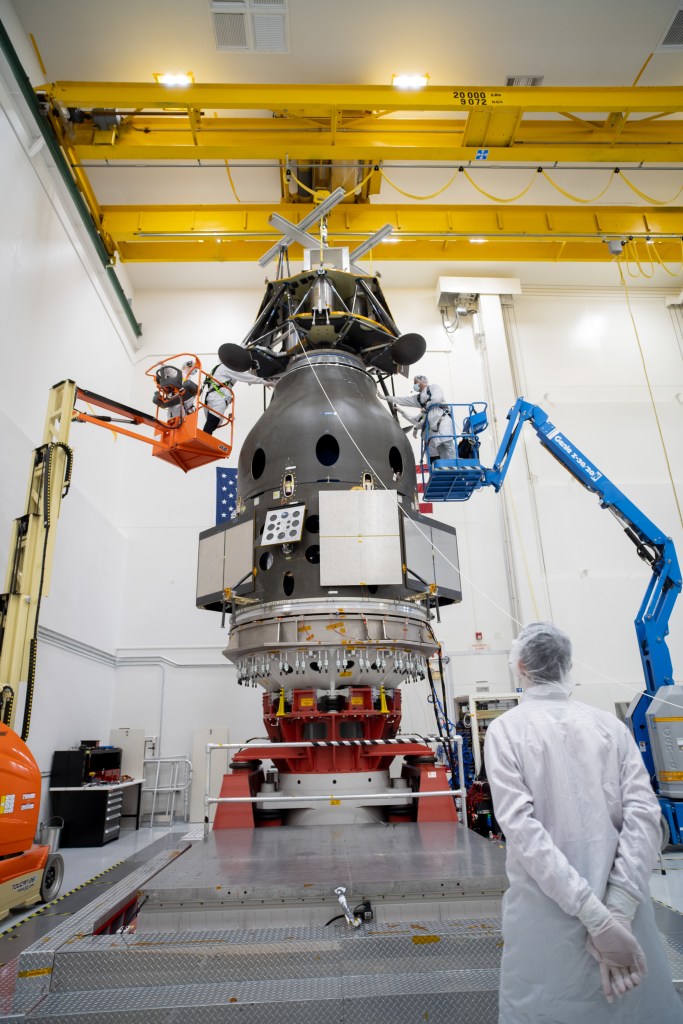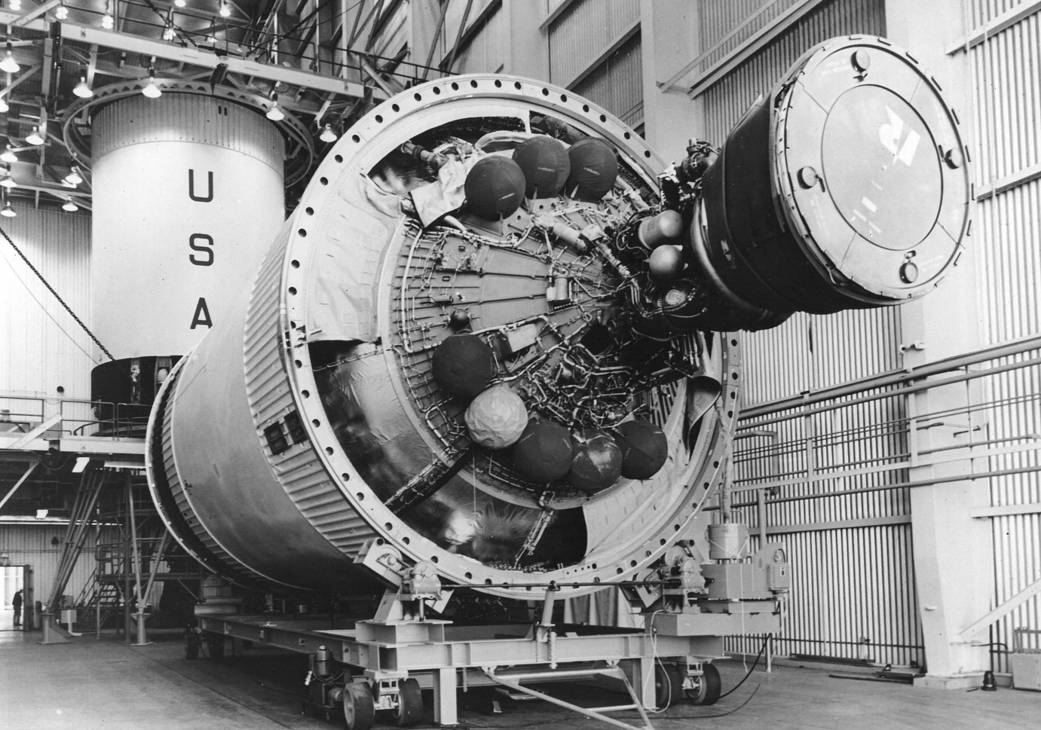This week in 1963, the first extended-duration firing test of the J-2 engine was conducted by Rocketdyne of Los Angeles. The J-2 engine was developed by Rocketdyne under the direction of NASA’s Marshall Space Flight Center and was propelled by liquid hydrogen and liquid oxygen. A cluster of five J-2 engines powered the S-II stage of the Saturn rocket while a single J-2 was employed on the S-IVB, the third stage of the Saturn V. Here, the aft end of the Saturn V S-IVB stage rests on a transporter in the Manufacturing Facility at Marshall. NASA will mark the 50th anniversary of the Apollo Program from October 2018 through December 2022. The program landed a dozen astronauts on the Moon between July 1969 and December 1972, and the first U.S. crewed mission — Apollo 8 — that circumnavigated the Moon in December 1968. The NASA History Program is responsible for generating, disseminating, and preserving NASA’s remarkable history and providing a comprehensive understanding of the institutional, cultural, social, political, economic, technological and scientific aspects of NASA’s activities in aeronautics and space. For more pictures like this one and to connect to NASA’s history, visit the Marshall History Program’s webpage. (NASA)
1 min read























